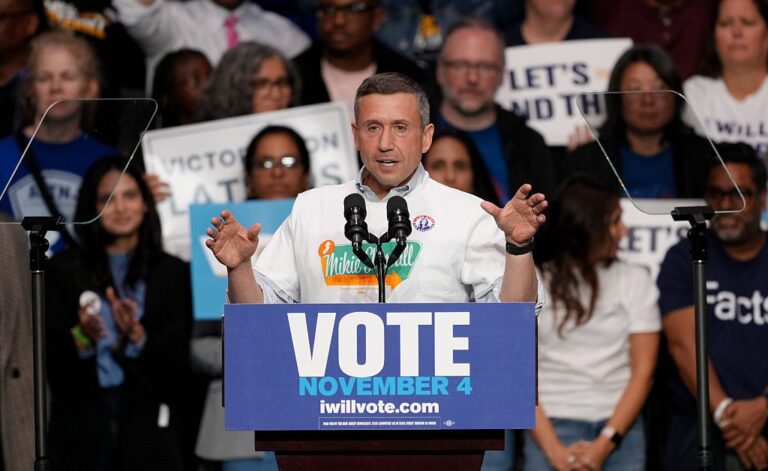
Millions Risk Losing Food Aid Amid Shutdown Standoff
House Speaker Mike Johnson is siding with the Trump administration’s decision not to use emergency contingency funds to sustain the Supplemental Nutrition Assistance Program (SNAP) as the government shutdown drags on. The move threatens to cut off food benefits for 42 million low-income Americans starting Saturday if lawmakers fail to approve a funding stopgap this week.
During a press briefing on Monday, Johnson said he reviewed the administration’s legal analysis and found it “legitimate,” supporting the stance that the $5 billion contingency fund cannot legally be used to cover SNAP benefits. He added that redirecting those funds “would immediately pull resources from school meals and infant formula,” echoing the administration’s position that the money is a finite source meant for other nutritional programs.
The SNAP program is projected to run out of funds by November 1, marking what could be the first lapse in food assistance in modern U.S. history. The potential fallout would hit both red and blue states hard , particularly rural communities and working-class families who depend heavily on the program.
Partisan Divide Over Funding Solutions
Democrats and several moderate Republicans argue that the administration does have the authority to tap the contingency funds in emergencies. However, Johnson and GOP leadership insist the solution lies in passing the House-passed continuing resolution (CR) to fully reopen the government, rather than piecemeal funding.
“Piecemeal funding is not the way this should be done,” said Rep. David Valadao (R-Calif.), whose district faces significant economic strain if SNAP benefits lapse. “Senate Democrats need to pass the clean CR and stop holding the American people hostage.”
Even some Senate Republicans, including Appropriations Chair Susan Collins, have floated the idea of a standalone SNAP funding bill to avert the crisis. But House GOP leaders remain divided, with some privately admitting they expect the Trump administration or state governors to find short-term solutions to bridge the funding gap.
ALSO READ: Hugh Jackman, Sutton Foster Make Red Carpet Couple Debut
“I find it hard to believe a department with so many slush funds can’t find the money for a month of SNAP benefits,” one House Republican said anonymously, voicing growing frustration within the party.
House Majority Leader Steve Scalise told reporters that the administration is “doing everything they can,” but acknowledged the limits of what can be done without Congress reopening the government.
Mounting Pressure Ahead of November 1
The shutdown standoff continues to intensify pressure on both parties. SNAP, which supports low-income families and children nationwide, has never experienced a full funding lapse. Economists warn that such a disruption could trigger food insecurity spikes and strain local food banks already operating at capacity.
Rep. Don Bacon (R-Neb.) said he’d support using emergency funds if absolutely necessary, noting that while Democrats share blame for the shutdown, the GOP should “do what we can to alleviate harm done by the Democrats.”
With the shutdown entering another critical week, the Trump administration and congressional leaders face mounting scrutiny over how long they can maintain their stance before millions begin missing essential food assistance.
If no resolution is reached, November 1 may mark an unprecedented breakdown in federal food aid delivery , a crisis both politically and socially explosive for the administration.







